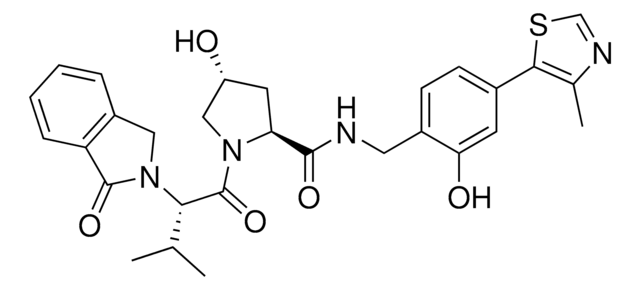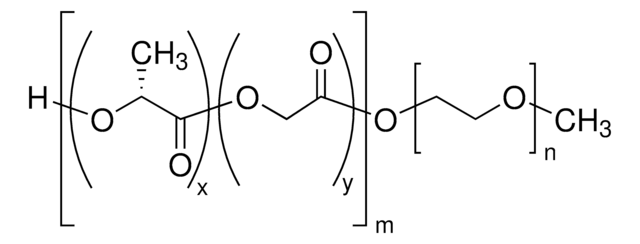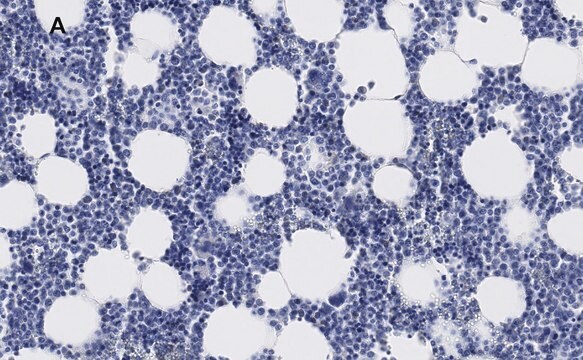926248
Redox Responsive Poly(ethylene glycol)-block-poly(lactide-alt-glycolide)
PEG average Mn 5000, PLGA Mn 15000
Synonym(s):
Drug release, PEG-PLGA with disulfide linkage, PEG-SS-PLGA, Stimuli-responsive
About This Item
Recommended Products
form
powder, chunks or granules
Quality Level
mol wt
PEG average Mn 5000
PLGA Mn 15000
storage temp.
2-8°C
SMILES string
O=C(C(C)OC(CO[H])=O)OCCSSCCOC(OCCOCCOC)=O
InChI
1S/C15H26O10S2/c1-12(25-13(17)11-16)14(18)22-7-9-26-27-10-8-24-15(19)23-6-5-21-4-3-20-2/h12,16H,3-11H2,1-2H3
InChI key
DPMVWUUTGXWXPV-UHFFFAOYSA-N
Related Categories
Application
Different from common Poly(lactide-co-glycolide) (PLGA) polymer, the lactic and glycolic units in Poly(lactide-alt-glycolide) block alternate in sequence in the polymer chain, and the molar ratio of lactic to glycolic units in the polymer is exactly 1:1.
Poly(lactide-alt-glycolide) exhibits excellent solubility in common organic solvents, such as acetonitrile, acetone, dioxane, DCM, and THF, providing great convenience for drug delivery researches and applications.
Storage Class
11 - Combustible Solids
wgk_germany
WGK 3
flash_point_f
Not applicable
flash_point_c
Not applicable
Choose from one of the most recent versions:
Certificates of Analysis (COA)
It looks like we've run into a problem, but you can still download Certificates of Analysis from our Documents section.
If you need assistance, please contact Customer Support.
Already Own This Product?
Find documentation for the products that you have recently purchased in the Document Library.
Our team of scientists has experience in all areas of research including Life Science, Material Science, Chemical Synthesis, Chromatography, Analytical and many others.
Contact Technical Service








